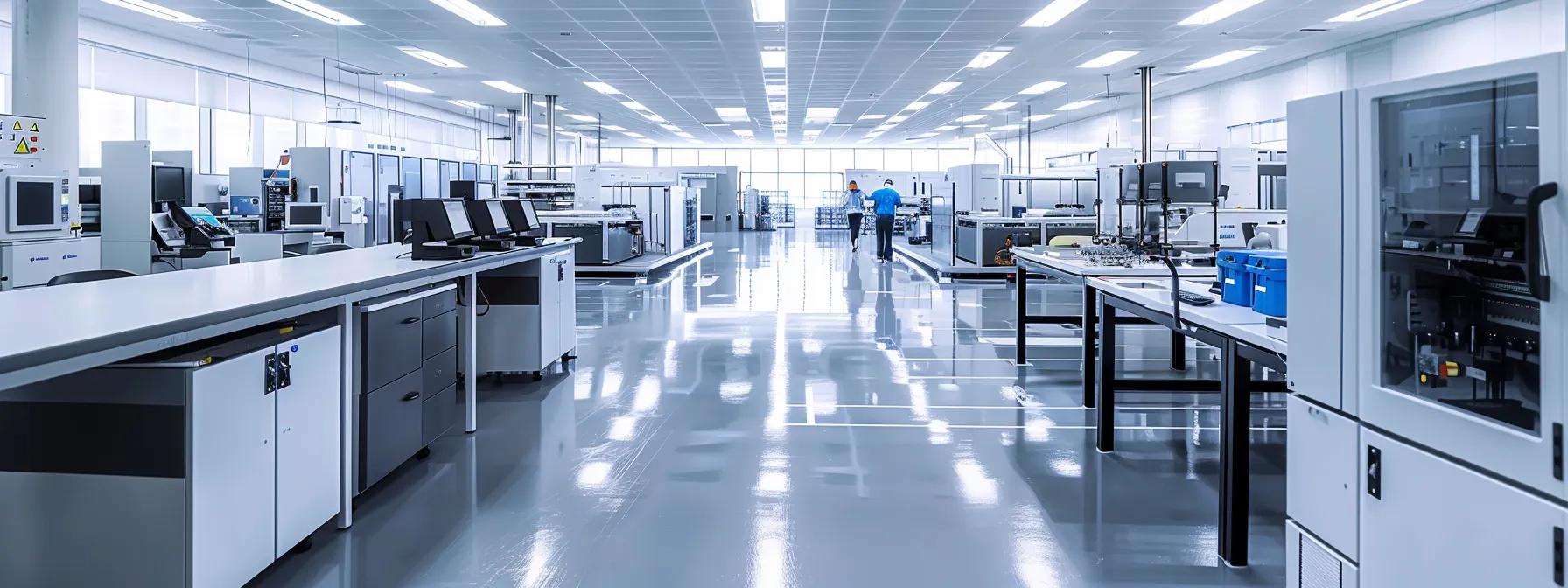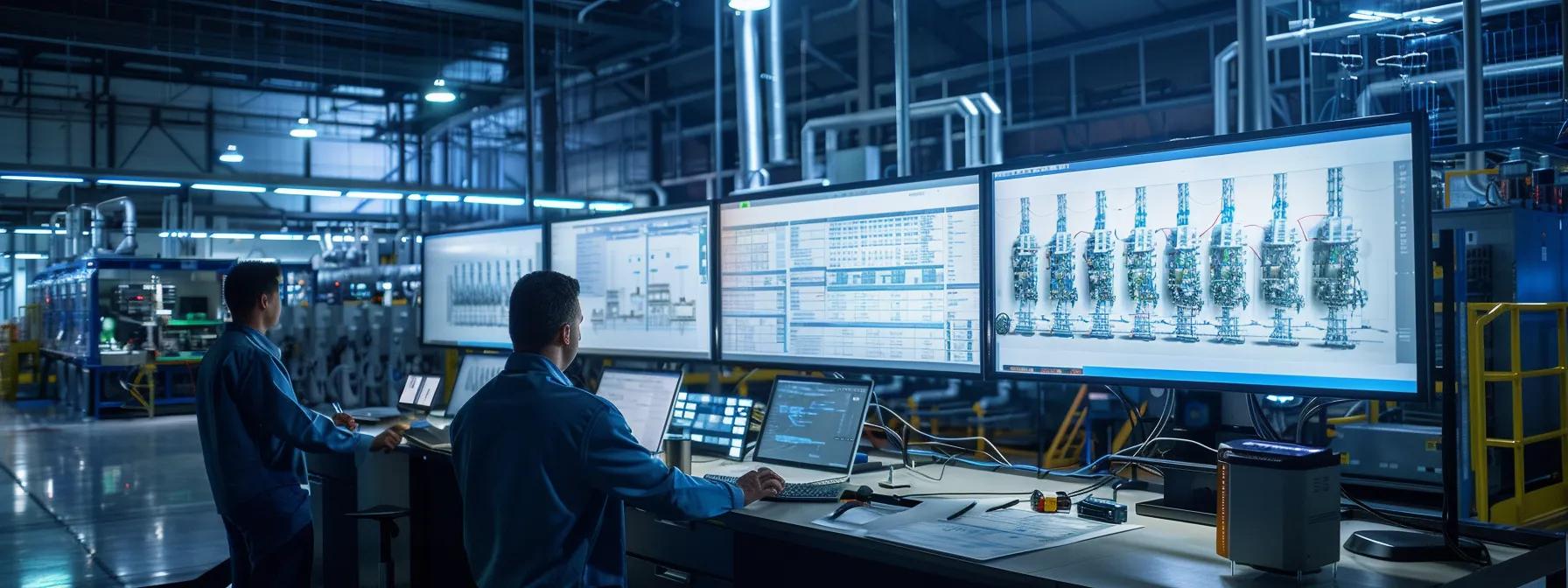
PED testing ensures that pressure equipment meets the strict standards of the Pressure Equipment Directive before entering the market. Similar to food allergy tests, this rigorous approach prevents failures that could lead to accidents or environmental damage while maintaining public safety and industry reputation.
What Does PED Testing Involve?
PED testing includes various inspections, measurements, and evaluations of pressure equipment. Tests under simulated operating conditions verify that equipment withstands internal pressures. Technicians also check compliance with design and manufacturing instructions, ensuring that every component performs as intended.
How Does PED Testing Ensure Pressure Equipment Safety?
By monitoring parameters like pressure levels, stress concentrations, and material fatigue, PED testing helps avoid equipment failure. Standardized test protocols, including cyclical pressure and static load assessments, determine how long equipment can safely handle high pressures, thereby reducing the risk of hazardous incidents.
Which Equipment Requires PED Testing?
Equipment requiring PED testing includes boilers, pressure vessels, piping systems, and any device engineered for high-pressure operation. This category also covers gas and liquid storage units, as well as manufacturing machinery using pressurized fluids. Testing these items confirms their adherence to PED regulations before installation.
How Does PED Testing Support Regulatory Compliance?
PED testing provides documented evidence that pressure equipment meets mandatory safety and quality standards. It is an essential part of the certification process that ensures companies comply with legal and regulatory frameworks, thereby avoiding penalties.
What Are the Key Requirements of the Pressure Equipment Directive?
The directive mandates specific technical requirements covering design, manufacture, and inspection routines. Manufacturers must supply detailed technical documentation and undergo periodic conformity assessments. Rigorous testing and certification demonstrate that equipment can operate safely throughout its intended lifecycle.
How Does PED Testing Help Meet Legal Standards?
Thorough testing and detailed documentation help companies fulfill legal standards by meticulously identifying potential risks. The creation of an auditable testing trail reassures regulatory bodies of the equipment’s safety, facilitating market approval and consumer trust.
What Are the Consequences of Non-Compliance?
Non-compliance with PED testing can result in heavy penalties, including fines or bans on equipment sale. Equipment failures from insufficient testing may lead to accidents, causing property damage or injuries. Such high risks stress the need for robust PED testing programs.
What Are the Main Benefits of PED Testing for Manufacturers and Operators?

PED testing minimizes risks and liabilities while boosting operational performance. It enhances consumer trust and product reputation by ensuring that equipment remains safe during prolonged use.
How Does PED Testing Improve Equipment Reliability and Performance?
Early detection of design issues through PED testing guarantees that all potential failure modes are addressed before installation. With established safety margins, manufacturers can be confident in their equipment’s performance and longevity.
How Does PED Testing Minimize Operational Downtime?
By identifying issues before operational failures occur, PED testing helps avoid unscheduled downtime. Regular in-service inspections and scheduled re-tests enable preemptive maintenance and reduce chances of costly emergency repairs.
How Does PED Testing Enhance Market Access and Customer Trust?
A PED certification provides a competitive market advantage, signaling that the equipment meets high safety standards. This certification not only opens up international trade opportunities but also builds customer confidence in the product’s safety and reliability.
What Are the Common Methods and Procedures Used in PED Testing?
PED testing employs various methods—from simple visual inspections to advanced non-destructive testing—to assess an equipment’s structural integrity and safety margins.
What Types of Inspections and Assessments Are Conducted?
Inspections include dimensional checks, visual examinations for defects, and assessments of material composition using techniques such as ultrasonic testing and X-ray diffraction. These measures ensure that construction materials meet required standards and that the final product is free of manufacturing inconsistencies.
How Are Conformity Assessments Performed?
Conformity assessments are carried out by certified testing bodies using internationally recognized procedures. They blend design reviews with practical tests – like hydrostatic pressure and cyclic fatigue assessments – to produce a conformity certificate that confirms compliance with PED standards.
What Role Do Third-Party Testing Services Play?
Independent third-party testers offer objective evaluations of pressure equipment. Their unbiased reports and certifications, recognized by global regulatory bodies, support smoother market access and bolster the credibility of the testing process.
How Is PED Testing Integrated Into the Lifecycle of Pressure Equipment?

PED testing is an integral process that spans the entire lifecycle of pressure equipment—from design and production to decommissioning—ensuring long-term safety.
When Should PED Testing Be Conducted During Equipment Production?
Testing should occur at multiple production stages. It begins with design verification and prototype evaluations, continues during manufacturing, and culminates with final product tests before market release. This phased approach allows early detection and correction of design flaws.
How Is PED Testing Used for in-Service Equipment Inspections?
Periodic in-service inspections ensure that equipment continues to operate safely under real-world conditions. These inspections use non-destructive tests and performance audits to detect wear or material fatigue, ensuring ongoing compliance with PED standards.
What Are the Requirements for Re-Testing and Recertification?
Depending on equipment type and operating conditions, regulatory bodies mandate periodic re-inspections. Regular re-testing and recertification ensure continuous compliance, minimize risks, and extend the lifespan of the equipment.
What Are the Challenges and Limitations of PED Testing?
While PED testing offers numerous benefits, it faces challenges that can affect project timelines and overall costs.
What Technical Challenges Are Common in PED Testing?
Accurately simulating worst-case scenarios and obtaining precise measurements under high pressure can be challenging. Complex designs and composite materials may require advanced testing technologies and highly skilled technicians to deliver reliable results.
How Can Testing Delays Impact Project Timelines?
Delays in testing can lead to postponed production or market entry, increasing costs and creating bottlenecks. Coordinated planning and collaboration with third-party laboratories are critical to aligning testing schedules with production timelines.
What Are the Costs Associated With PED Testing?
PED testing can be expensive due to laboratory fees, personnel costs, and the need for specialized equipment. Although these costs are significant, they are offset by the benefits of enhanced safety, improved reliability, and reduced liability risks over time.
How to Choose the Right PED Testing Provider?

Selecting an appropriate PED testing provider is essential for ensuring compliance, efficiency, and long-term safety. A dependable provider adds value through technical expertise and advanced technology.
What Qualifications and Expertise Should a PED Testing Service Have?
The provider should hold recognized certifications and possess extensive experience in pressure equipment testing. Up-to-date knowledge of PED regulations and proficiency in advanced non-destructive testing techniques are essential for accurate evaluations.
How to Evaluate Testing Efficiency and Compliance Assurance?
Efficient providers offer quick turnaround times, high-quality documentation, and a strong compliance track record. Digital reporting and online tracking can enhance transparency and expedite market access. Client reviews and case studies can also indicate reliability.
What Are the Benefits of Using a Global Testing Provider?
Global providers deliver consistent standards and best practices across international markets. Their extensive networks and investment in modern technologies streamline the certification process, enhancing market access by ensuring that test results are widely recognized.
Frequently Asked Questions
Q: What is the main purpose of PED testing?
A: PED testing ensures that pressure equipment meets safety and performance standards to prevent accidents and comply with international regulations.
Q: How often should in-service PED inspections be performed?
A: Inspections are conducted periodically based on equipment type and operating conditions, with re-testing scheduled as needed to maintain compliance.
Q: Can PED testing delays affect project timelines?
A: Yes, testing delays can extend production times, increase costs, and delay market entry, necessitating careful planning.
Q: What technical challenges are associated with PED testing?
A: Challenges include simulating real-world conditions, achieving precise high-pressure measurements, and testing complex composite materials.
Q: How do global testing providers enhance market access?
A: They ensure consistent international standards and provide certifications recognized worldwide, facilitating smoother market entry into diverse regions.
Final Thoughts
PED testing is essential for ensuring the safety, reliability, and compliance of pressure equipment throughout its lifecycle. From design and production to in-service inspections and recertification, robust testing practices offer clear benefits such as enhanced market access, minimized downtime, and improved product performance. By understanding the regulatory requirements and the challenges associated with PED testing, manufacturers and operators can make informed decisions for long-term success. Partnering with a qualified global PED testing provider helps maintain high standards, reduce risks, and build lasting customer trust in an increasingly competitive market.
